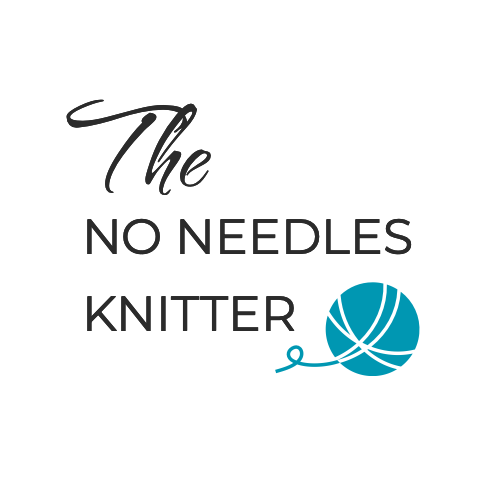Unleash Your Creativity: Exploring the World of No Needles Knitting
I first started with no needles knitting in 2018 when my military husband was on deployment. That was a tough time. Raising two kids pretty much on my own as well as trying to keep my own self care going was very difficult. I found a Knitting Nancy in a charity shop and it reminded me of when I had used one as a child. I decided to try it again and thus my no needles hobby was born.
This blog post is an introduction to no needles knitting, the techniques and the many things that you can make with them.
Let’s make a start!
Why no needles knitting?
Therapeutic benefits – It helps to reduce stress, anxiety, and even lower blood pressure.
Calming experience – No needles knitting allows you to unwind and find peace in the midst of a busy day.
Easy to learn – There are really only a few tricks to learn and once you have these you are well away!
Co-ordination – It is great for those of us who have poor coordination or dexterity as it is much easier on the joints compared to traditional knitting.
The main types of no needles knitting
Loom Knitting
Loom knitting involves using a knitting loom—a circular or rectangular device with pegs—to create knitted fabric. This method is perfect for beginners and experienced knitters alike, as it’s easy to learn and offers endless possibilities for creativity. I made a couple of mug coasters recently on my small knitting loom – haven’t they turned out well!
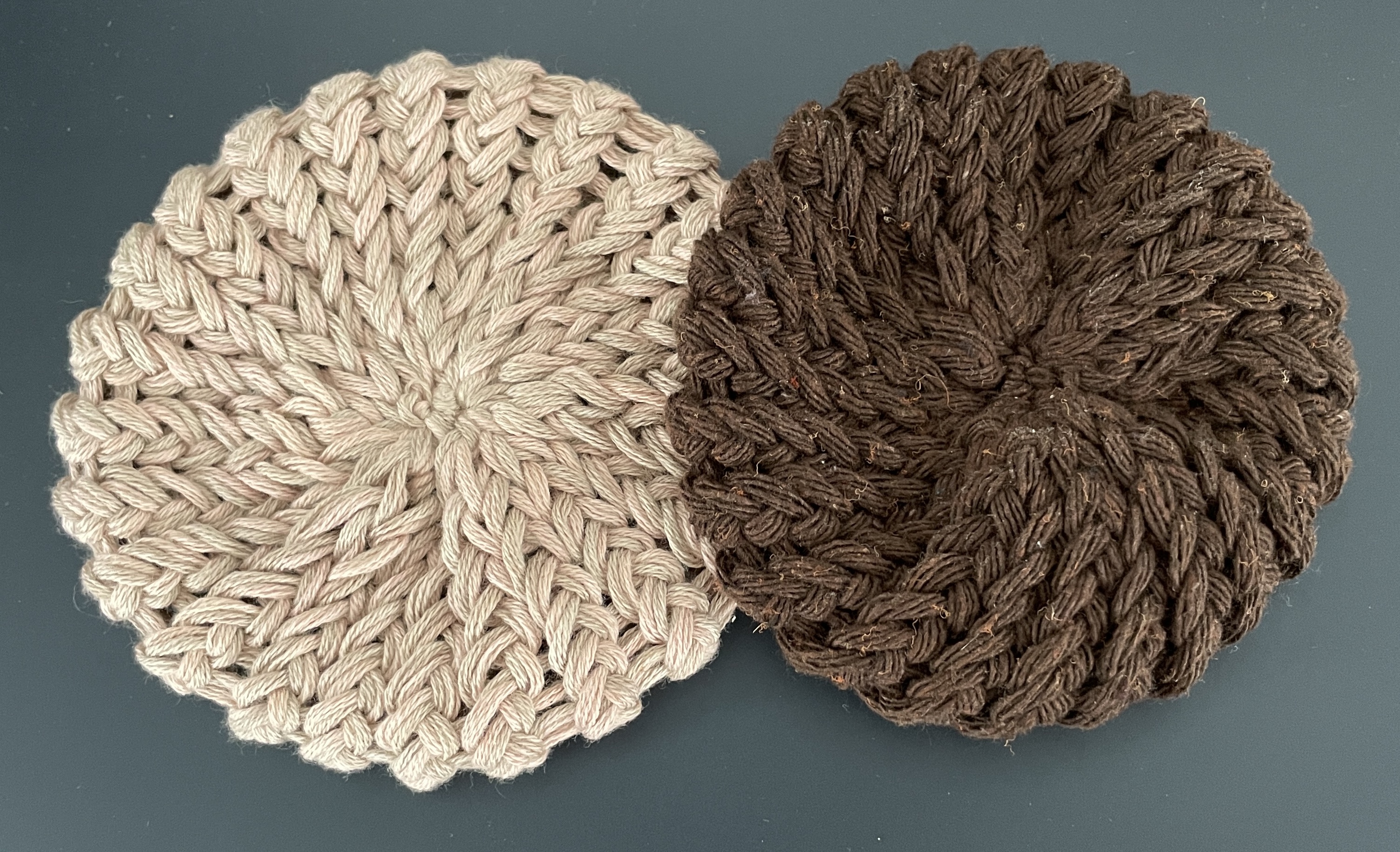
Finger Knitting
Finger knitting is a simple and intuitive technique that involves using only your fingers to create knitted fabric. It’s a great way to introduce kids to the world of knitting and can be done anytime, anywhere, without the need for any special tools or equipment.
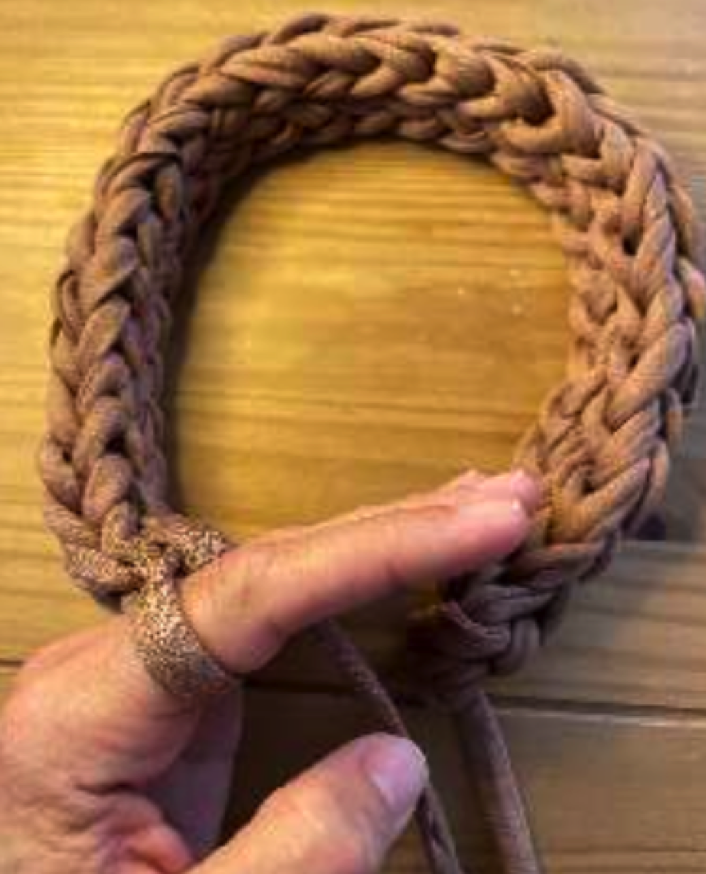
Arm Knitting
Arm knitting takes the concept of no needles knitting to the next level by using your arms as giant knitting needles. This technique produces oversized, chunky fabrics that are perfect for cozy blankets, scarves, and more.

Knitting Nancy (Spool Knitting)
Knitting Nancy, also known as spool knitting or corking, is a technique that involves wrapping yarn around a small spool or knitting Nancy with multiple pegs to create narrow tubes of knitted fabric. This method is great for making cords, straps, and embellishments for your knitting projects.
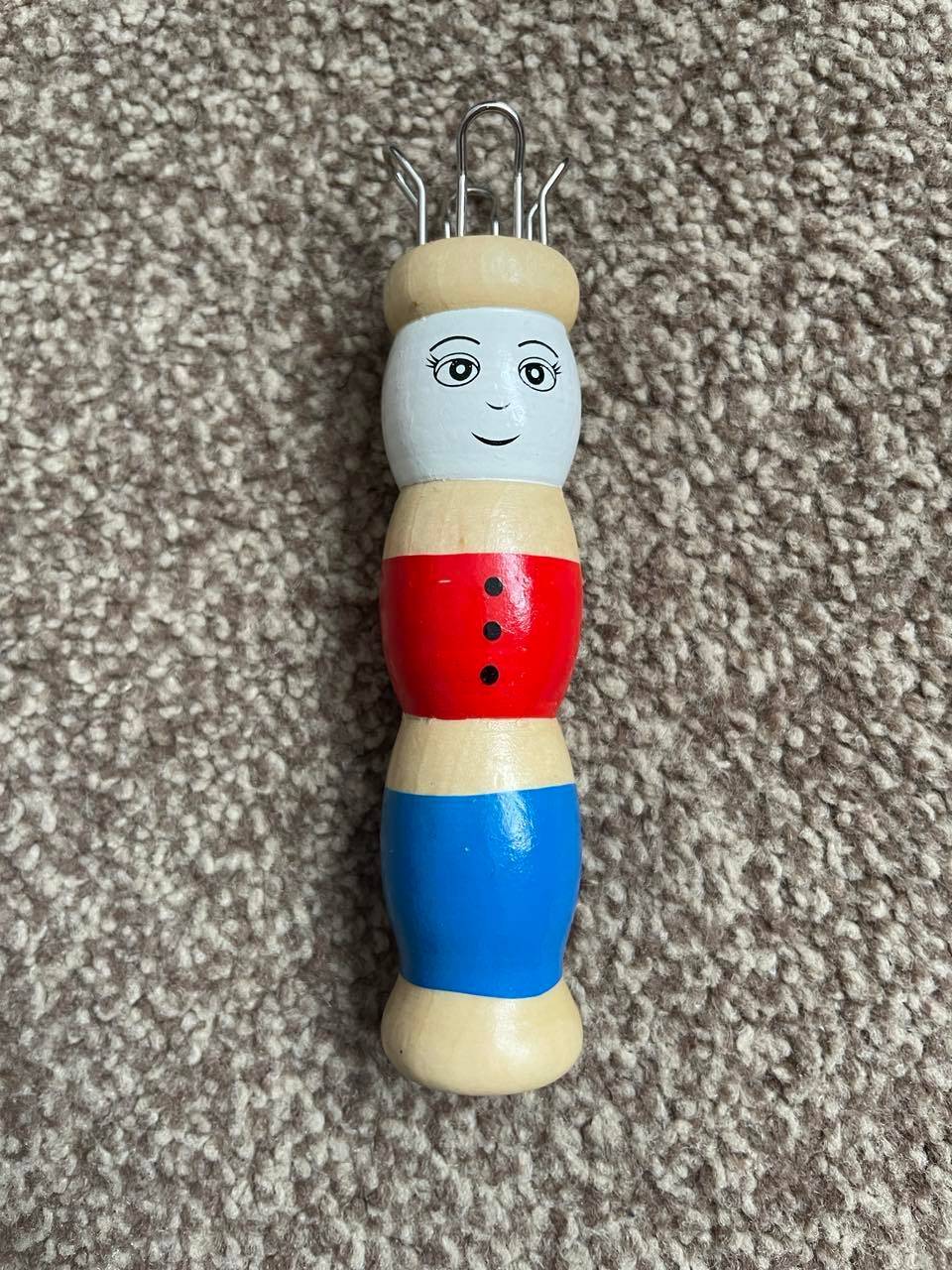
Lucet Knitting
Lucet knitting involves using a lucet tool—a two-pronged fork—to create braided cords or square cords, also known as I-cords. This technique is commonly used for edgings, decorative trims, and embellishments on garments and accessories.
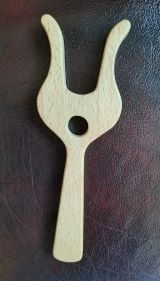
I do find that sometimes the lucet fork icords that come out are not as even as the ones I do with other techniques, but that could well be to do with my tension. Tension is key here!
Circular Knitting Machines
Circular knitting machines are mechanical devices that use a circular arrangement of needles to produce seamless tubes of knitted fabric. These machines are capable of knitting quickly and efficiently, making them ideal for mass production of garments and textiles.
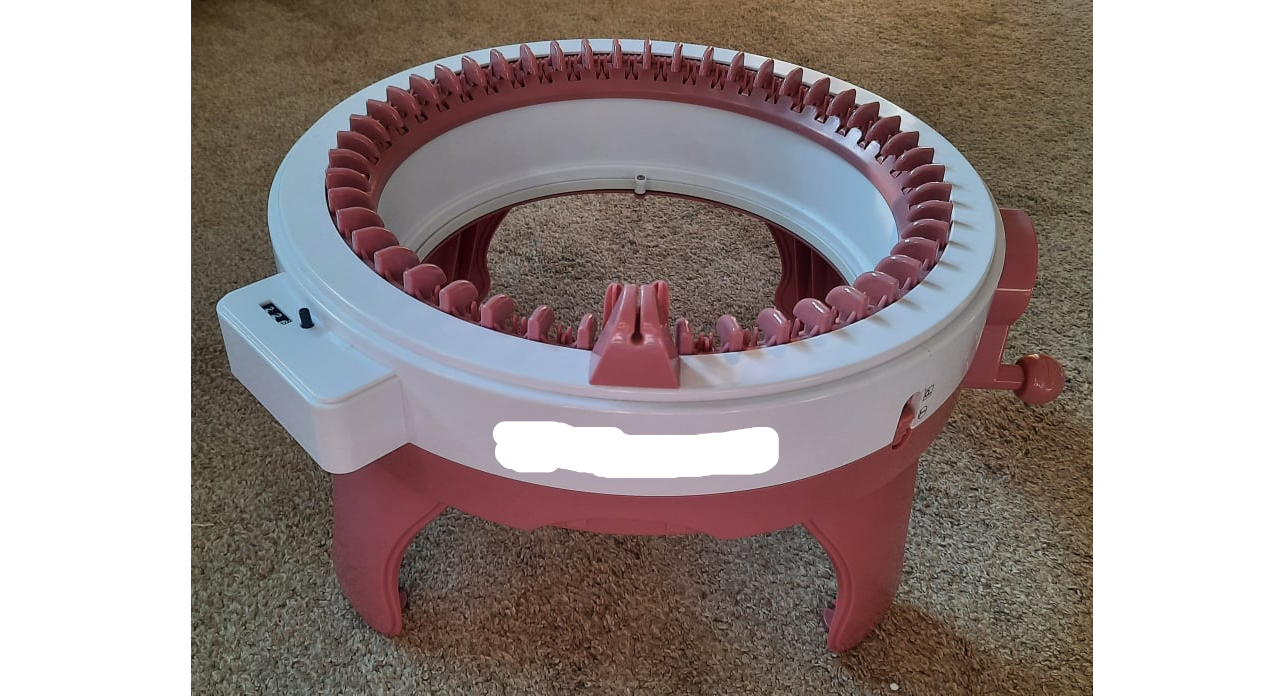
Each of these no needles knitting techniques offers its own unique advantages and possibilities, allowing you to explore different methods and create a wide range of projects with ease.
So what can you make with these no needles knitting techniques?
The thing with no needles knitting is that each technique makes different things. They are not the same as traditional knitting as they are much bigger, bolder and quirky.
Here are some ideas that you can make with the techniques.
Arm Knitting:
Chunky Scarves
Infinity Cowls
Blanket Scarves
Simple Throws
Finger Knitting:
Coasters
Bracelets
Hair Accessories
Necklaces
Loom Knitting:
Basic Hats
Headbands
Coasters
Ear warmers
Knitting Nancy:
Cords
Embellishments
Belts
Coasters
Lucet fork:
Braids
Decorative trims
Hair Accessories
Necklaces
Circular knitting machine:
Beanie hats
Scarves
Cowls
Ear warmers
For me, no needles knitting has been what I turn to time and time again when things have been a bit rocky. It is the one thing that has kept me going. I love to research about the techniques and eco friendly yarns, and hope that I am making the planet a better place, one creation at a time.
For more information, head to my You Tube channel which has lots of videos on all things no needles knitting.
